The Fall of Hyde Manor

Maybe my love of exploration transitioned into an obsession here, at Hyde Manor. The brooding wooden dinosaur of a building holds a lot of memories for me, and planted the seeds of me starting this blog years ago. To be honest, I may never have perused photography or exploring as seriously if it weren’t for my time here.
The manor was opened in 1865 by James Hyde, and after its completion, it was considered to be one of the most esteemed getaways in New England.
And now it all lies in ruins, sitting in the Sudbury woods with the hum of the highway swallowing whatever sad songs the hotel sings. I first saw the building as a wide eyed 12 year old, passing it en route to a destination long forgotten, but Hyde Manor forever burned itself into memory. I knew that day that I wanted to come back and explore it, to discover whatever wondrous secrets lay inside. And several years later, I got my chance.
Peering up at this brooding structure behind the maples that separate sun from shadows offers no insight to what it used to be. Its windows are broken, tattered curtains hang in strips through the vacant panes. The massive front tower, a signature architectural feature of this grand structure, is dangerously lopsided and looks like it may soon tumble down onto the tall grass you stand in. The once grand New England veranda with rows of wooden rocking chairs have long wasted away into weedy piles of debris. There are no signs, no historical markers, no identity.
So, what was this place? And what happened here? Though you can’t tell by looking at it, this is all that remains of Hyde Manor, a once grand antebellum hotel in the Vermont countryside, now a collection of rotting bones that are slowly turning to dust upon the ground it sits on.
But even in decay, Hyde Manor still retains its elegance. You don’t even have to question that this place was once magnificent. But why was it left to waste away? To get a good idea of what happened, you need to know a little about its past. And through extensive research online, I was able to get a basic idea of the picture.
Hyde Manor’s origins began as something much more humble and can be traced back to around 1798, as a small stagecoach stop known as Mills Tavern, back when the busy state route out front was a muddy and arduous stage road. In 1801, Pitt Hyde bought the tavern and 47 surrounding acres.
The tavern was eventually passed down to Pitt Hyde’s son, James. Overtime, James began holding all night Yankee balls at the tavern which turned out to be a huge success and developed a loyal customer base, as well as becoming a landmark. As time passed, James wanted to do more than run a tavern, and decided to expand. Eventually, he would open Hyde’s Hotel. His timing was impeccable, as a train station and a new canal in nearby Whitehall, New York soon made the region more accessible to wealthy tourists. Hyde’s property also had a tourism magnet of the time, mountain springs, which at the time were thought to possess healing properties that could cure the sick and the mentally ill. If your business advertised these moot claims – you were almost guaranteed to draw crowds. Hyde took advantage of these situations and began marketing his hotel as a destination, especially for those living in the dirty urban metropolises of the northeast looking for respite and peace of mind in bucolic Vermont.
When a fire destroyed the original building in 1862, the Hyde’s decided to rebuild. But this time, James was riding on the silver tides of great expectations and envisioned something grander – a showpiece! Something to secure the Hyde family legacy. By 1865, the stately Italianate building that still stands today was erected with no expenses spared. Hyde’s bravado paid off. The resort’s popularity only continued to grow in the antebellum years.
By the turn of the century, the hotel was passed down to James’ son Arunah, or “A.W.,” Hyde, and he began to expand the property once more. Now, the name was officially changed to Hyde Manor.
I was fortunate enough to be given a scanned copy of an original 1901 promotional booklet on Hyde Manor. It’s old photos speaking through the antebellum haze, and gave me a startling impression of what it used to be like.
The capacity was advertised as 250 guests, and the buildings were state of the art in terms of luxury of the day. They were gas heated, with wide hallways containing public and private parlors. Many guest rooms were equipped with private baths, electric buzzers for communication purposes, and as fire escapes and a round the clock watchman, just in case. People looking for more intimate accommodations could stay in one of the cottages or farmhouses around the property, a few which are still standing today.
The property and its many buildings were connected by a series of broad piazzas, lined with the classic New England postcarded hotel image of wooden rocking chairs arranged in symetrically neat rows, offering wide views of sloping lawns which were once shaded by Maples and Elms, looked out over the distant silhouettes of the Adirondacks. At night, the grand piazzas were the perfect place to take in the soft summer air.There was a private boathouse on nearby Lake Hortonia, with complimentary stage coach service, as well as a private lake sitting at the top of the hill behind the manor, Lake Hinkum, which was stocked with trout for the fisherman.
The mountain springs which flowed on the property contained iron and sulphur, and were bottled for the guests enjoyment. There was even a spring house connected to the property by a wide plank deck, where guests could obtain it’s bottled water, free of charge.
The brochure boasted the superlative “every attraction has been given to the amusement of life of Hyde Manor”, and from what I was able to research, they weren’t over selling themselves. Other attractions include a casino, equipped with a stage for live performances. There was a billiards room where men could retire with a cigar and a drink at the end of the day. There was also a dark room for photographers, and 2 bowling alleys equipped with Narraganset Standard alleys. There was a music hall that could seat 300 people, mail service, a telegraph office, a 200 acre golf course across the road, a ski hill in the winter (at the golf course) tennis courts, baseball diamonds and shuffleboard courts.
Hyde Manor became such a well known destination that old maps began printing the name Hyde Manor on them, as if it were the town itself, and sometimes, the town of Sudbury wouldn’t even be included. Even until a few years ago, I recall atlases including Hyde Manor on the map.
A brief conversation with the owner on the front lawn uncovered the enigma of Hyde Manor’s post mortem. When the World War 2 era rolled in, automobile and airplane travel began increasing rapidly, bringing independence and broadening traveling options. The Hyde’s assumed this would be great for business, but ironically, that turned out to be exactly what killed the hotel. Now that people could come and go more freely, it made long stays in one place unnecessary. Soon, a new icon of Americana made its début, chain hotels. Hotels like Holiday Inns and Howard Johnsons, which began appearing in the 1950s, became instantly popular, and travelers were all about modern conveniences. Hyde Manor was now seen as out of date. The Hyde’s sold the property in 1962, and in the last years of its former life, the manor operated as a resort called “The Top of The Seasons”. Unfortunately, the hotel suffered a slow and painful death until 1970 when it closed it’s doors for good. According to a few who were kind enough to share their memories, around the time of its closing, they recalled the hotel being a little dingy and dirty.
The family couldn’t afford to fix it up, and can’t afford to tear it down. Over time, maintenance became a bill they couldn’t afford, and the state of Vermont barred any attempts at resurrecting the property due to defeating changes in zoning and building code regulations. Hyde Manor still has lead paint and asbestos and now, has deteriorated to such an extent that it is impossible to save.
Years of abandonment and neglect have really worn out the old hotel. Most of the smaller buildings that surrounded the manor have almost completely fallen over, and the main house itself is in an extremely sorry state. Mother nature is slowly reclaiming what was once hers, as trees and vines ensnare the hotel more with every year. It’s a vision that would make misery so proud.
Ever since my first visit, I’ve been coming back. During this time, I’ve witnessed it waste away in front of me. Narrow hallways, fleeting shadows, guest rooms painted in vibrant pallets have all faded. Admittedly, all my visits to Hyde Manor have left me surprised. While at first I pictured this grand Vermont resort with airy and spacious rooms done in handmade craftsmanship, I was instead greeted with claustrophobia and a rambling layout that was more like a fun house than a grand hotel. All of the intoxicating features that my scanned brochure all advertised (quite successfully) were untraceable, much to my disappointment. There was no long narrow amusement hall, no bowling alley, no barber shop, no springs house. But, the springs, which are much older than the manor, can still be found alongside the back of the property in a ravine wild with scrub and low growth.
Walking through dark and silent hallways as my feet crunched over plaster dust created an atmosphere that would feel more at home in a dream I once had. The smell of mold, rot and stale air was nauseating. Its cosmetic wounds are destructive. Where rain and snow have infiltrated through the broken ceiling, the rot is spreading rapidly like blood veins up the walls. What hasn’t collapsed yet has mercifully adapted the colors of deterioration into the already striking palette of its walls, the foul smells eagerly communicating with passing visitors. But this show is just beginning. Doors hang off their hinges, dressers fall through weak floors and peeling wallpaper provides makeshift curtains for shifting walls. And it will only get better.
Inside, it’s hard not to feel humbled here. You’re walking around the ruins of the grand dream of someone you’ve never met, now left for you to discover and make your own.
You want to make a place like Hyde Manor your own, it practically invites it. To take pictures, to explore, to be inspired. It’s an irresistible impulse. And that’s what I live for. While the chaotic world outside somehow still exists, inside these forsaken locations is another world entirely that exists in perpetual haze, something you can take with you or leave behind. But while urban explorers like myself love this feeling, others hate it. Property owners, police officers and concerned neighbors who hate the attention, who hate how we wallow in their despairs, picking at the scars. And if you get hurt inside, there are chances your isolation may be your own demise.
The building has sadly aged into such a dangerous state of decrepitude now that passage inside is unsafe, only the brave or wild hearted make their entry through a broken window to communicate with its valiant ghosts that salivate from their tongues as you make your way through the wreckage. Hyde Manor grew up lonesome and one of a kind, and it seems that in death, the same can be said. Its cherished memories of former guests that have long turned into dust and forsaken artifacts underneath crumbling ceilings that won’t be saving its soul anymore.
Hyde Manor in its heyday:
From the Hyde Manor promotional booklet, 1901

A signed A. W. Hyde letter from Hyde manor 1886 – courtesy of Joel VanPatten, who kindly sent me a scan via email.
Hyde Manor today
The images below were taken over my various visits to Hyde Manor, ranging roughly from 2009, to 2013. Some photos have never been posted before, others have been re-edited. Some of these photos were taken way back in my past life, when I was learning how to use a camera, and coming to a realization that I wanted to become the person I am today, and therefore may not be my best quality as my recent posts, but the ones I’ve uploaded are passable in my opinion – and more importantly to me – help tell a story. Hope you enjoy.

The last standing wall of the former restaurant, which was once raved about in travel guide books. In 1850, Benson Lossing wrote in The Field Guide to the American Revolution, exclaimed that “a table equaled to Hyde’s” has become a proverbial expression of praise among tourists, for it is his justifiable boast that he spreads the choicest repasts that are given between Montréal and New Orleans. ” The restaurant was one of the first parts of the manor to collapse and is now a twisted indistinguishable pile of rotten building materials.
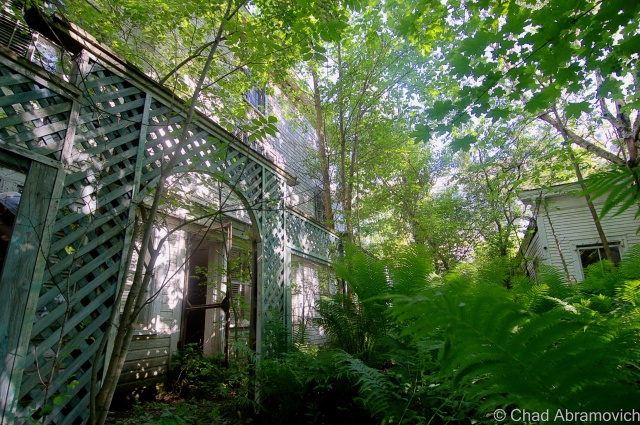
This section of the hotel was known as “The Terrace Suites”, an out building behind the main house with rooms that featured entrances on an outdoor terrace area – the focal point being a stone adorned fountain area.

The imprint of the old fountain, with its turquoise painted containment pool still detectable through dead leaves.
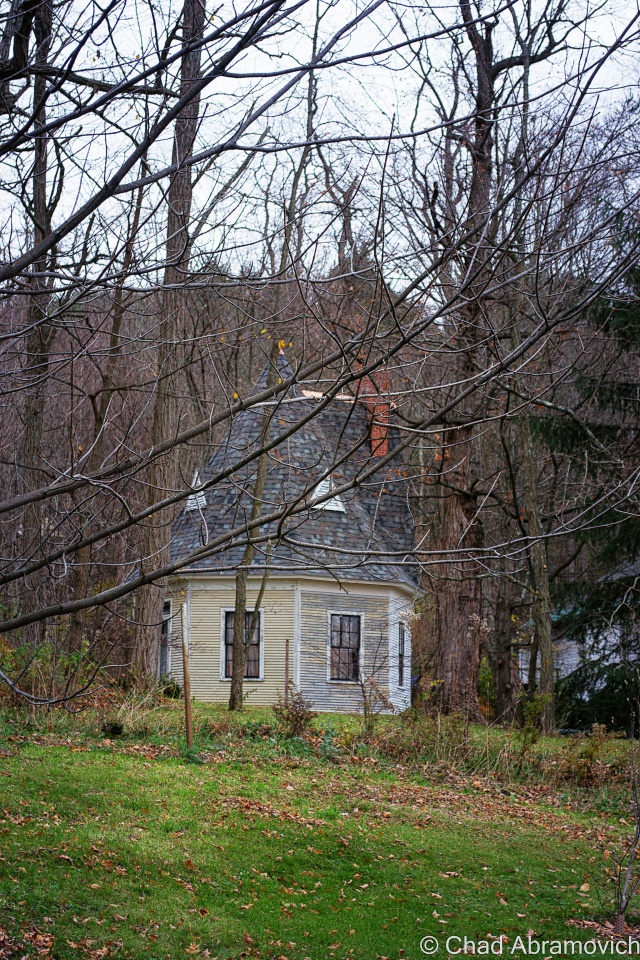
The former men’s cigar lounge, identified by it’s 8 sided structure and dramatic peaked roof, is one of the very few restored buildings on the property.

This has to be one of my favorite pictures I’ve taken. In 2011, a massive crack was heard bellowing through the Sudbury woods, followed by a hideous collapse that startled wildlife and neighboring residences. When the dust settled, the pieces of the puzzle were revealed. Part of Hyde Manor’s second floor had finally given way, due to years of water damage and rot. When that gave, the upper floors tumbled down with it, creating a huge hole in the front of the building – a landscape of vibrant exposed wallpapers and hanging doors. This picture was taken from the first floor, through the chunk of a former doorway of a guest room that had settled near the staircase. Through the door, it gives you a bizarre perspective of the 2nd and 3rd floors, and the individual guest rooms (or what’s left of them)
Hyde Manor, October 2016
—————————————————————————————————————————————–
To all of my amazing fans and supporters, I am truly grateful and humbled by all of the support and donations through out the years that have kept Obscure Vermont up and running.
As you all know I spend countless hours researching, writing, and traveling to produce and sustain this blog. Obscure Vermont is funded entirely on generous donations that you the wonderful viewers and supporters have made. Expenses range from internet fees to host the blog, to investing in research materials, to traveling expenses. Also, donations help keep me current with my photography gear, computer, and computer software so that I can deliver the best quality possible.
If you value, appreciate, and enjoy reading about my adventures please consider making a donation to my new Gofundme account or Paypal. Any donation would not only be greatly appreciated and help keep this blog going, it would also keep me doing what I love. Thank you!
Gofundme: https://www.gofundme.com/b5jp97d4
 Obscure Vermont
Obscure Vermont 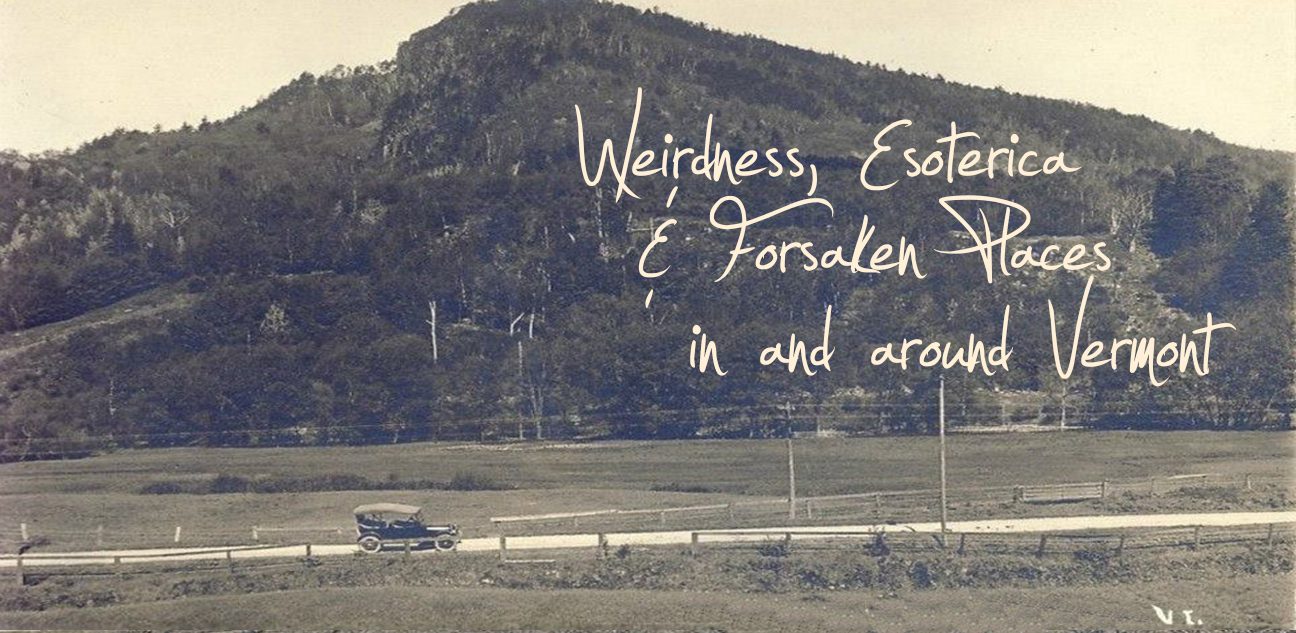








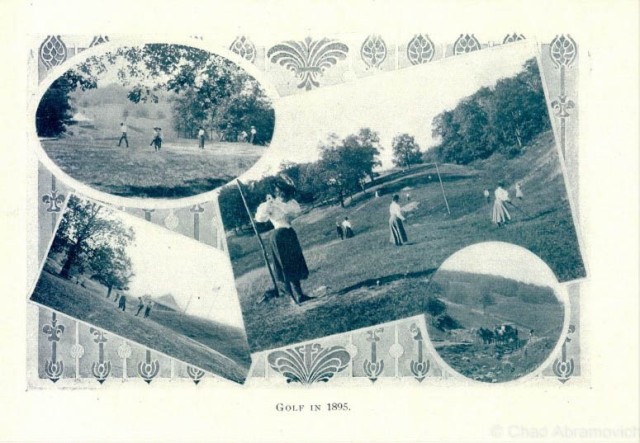




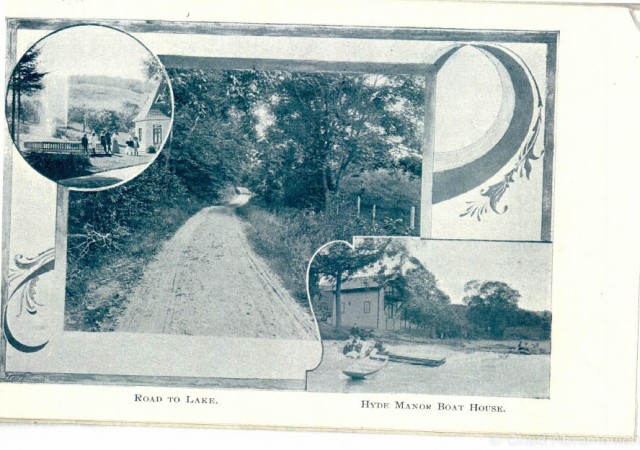








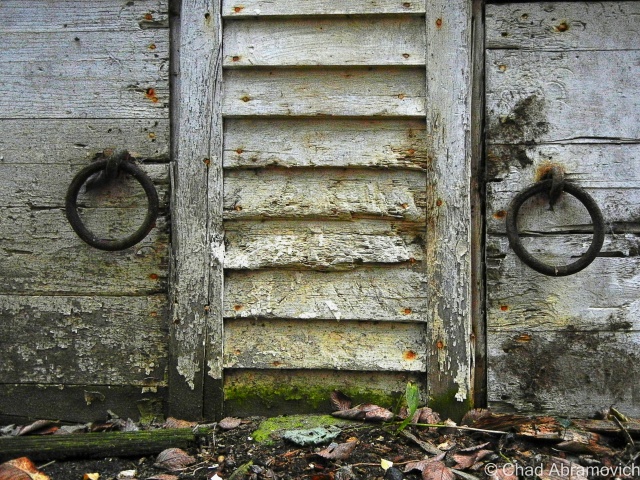
















































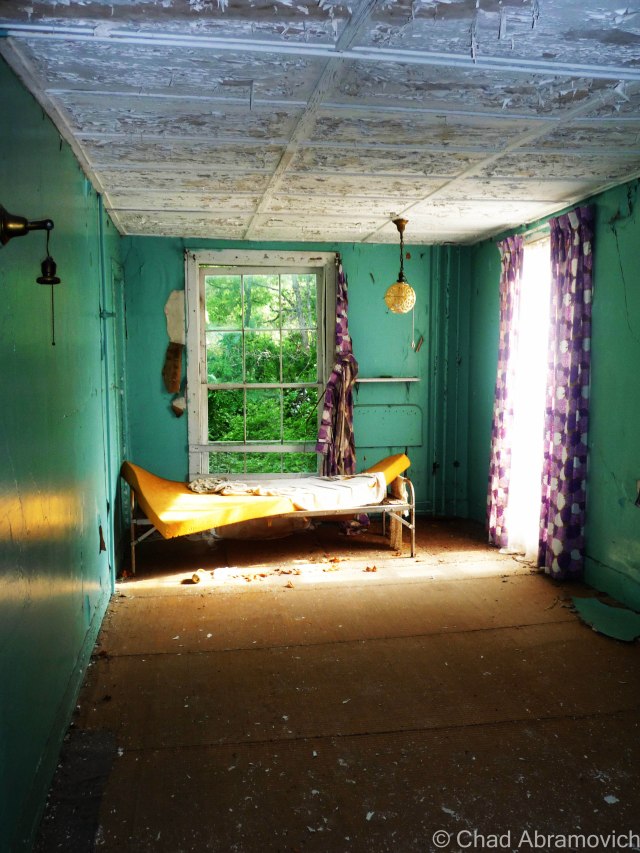








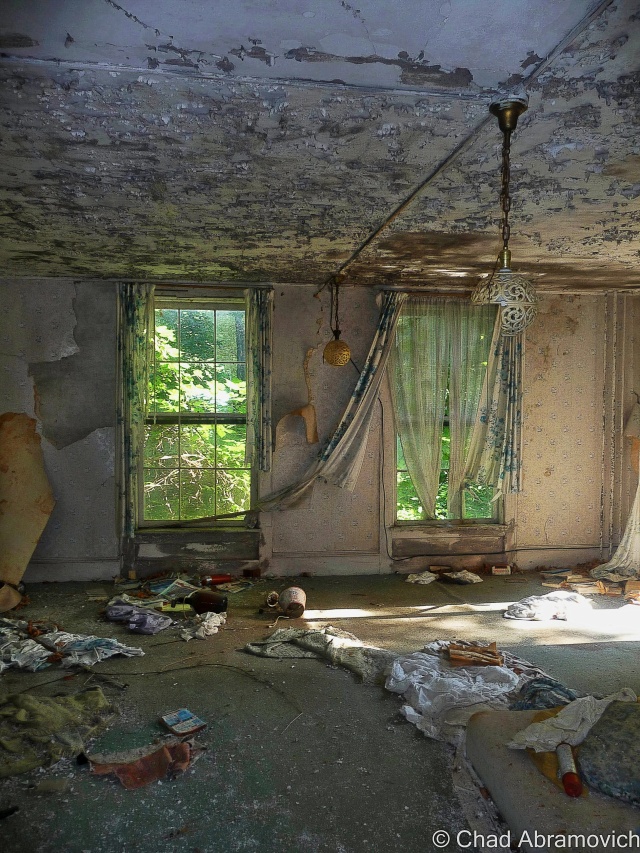








My son and I always pass this mansion on our way to his school (Castleton) on route 130. It is truly a tributary to 19th and 20th century architecture and design. Its a shame that it has passed restoration. we have always wanted a close look, thank you very much for the posts.
I love this place. Have driven past on several occasions on our way to Lake Bomoseen. Don’t understand why some architectural salvage business hasn’t offered to work with current owners to re-use the awesome woodwork, etc.
I live in the area and it is so very sad to see it just fall in..I also wish someone would work with the current owners to re-use the doors, woodwork etc. Too much history to just let it slowly fade away!!
So sad.
Very interesting. I always feel sad about places like this. I use to work at The Greenhurst Inn, in Bethel Vermont. It was so beautiful. I cleaned , cooked and took reservation. It was a bed and breakfast. The two guys that bought it changed it. They made it in to a restaurant. It has beautiful fire places. But it has changed so much. The last time I was in there, I left feeling very very sad.
I agree the doors..woodwork fixtures are worth a lot of money to someone who uses this period and type of stuff in their building ..the family or heirs need ti re-think or sell the remainder to a company ..let them take what they want in return they must clean up the area…win-win for both sides…my brother may be interest
ed….he s a contractor…
Maybe he should go by there & talk to someone……would be awesome all the way around!!
What a beautiful old place let go to reuin. makes me sick to see it fall in.I love these old buildings.I ve been their lived i Hydeville for years So i know this place. They didnt even take the furniture out of it. I agree the salvage could have really been something for others, The history of this Grogeous pace is heartbreaking .like all the old hotels on Bomooseen an Saratoga. lost. MADE ME SICK THEN MAKES ME SICK NOW TO SEE THEY LET THEM GO.HISTORY DOWN THE DRAIN. AND THEIR WAS SO MUCH IN THESE AREAS,!!!!!!!
This overview is extensive and wonderful to read. My husband actually grew two towns over from this place and when we were in college, we took an excursion onto this property. The black and white photographs were eerily beautiful and to this day we still enjoy looking at them. I always wanted to know the history! Thanks again for sharing/
Hi there! Great photos…great everything! I recently wrote a blog, interviewing a friend, and provided links to your Hyde Manner and Elgin Springs posts, for people to learn much more about them! Hope that’s ok! Here’s my blog: https://ontheedgeofart.wordpress.com/2016/02/11/shanta-lee-part-i/
Thanks so much, and happy to be a part of the blogging community with you! You’re awesome!
Sincerely,
Angel
Hey – thanks for the kind words and the shares Angel! Glad you’re enjoying! Blogging can be a lot of fun, especially meeting other cool people. I dig your blog as well! Brattleboro is a cool town. Wish I got down that way more often than I do. It seems me and you share some similar philosophies and sentiments when it comes to photography.
Oh the sorrow. I can’t imagine watching her steady decline, and realize that I’m extremely lucky to have seen and shared a portion of Her greatness. She will continue Her regal reign till the last ash is turned under. Thank you.
I live in VT for five years, and went past this, I always wanted to explore it, but my body wouldn’t allow it. Thank you for bringing to me. It is a true joy to see these long forgotten treasures. It is also sad that such a beautiful place was just left to ruin, and a true landmark destroyed. But thank you , for giving me a birds eye view, of something I have always wanted to see.
so sad how a place falls apart when not lived in-seems to know no one cares-and fads back into the earth.
The last owner I knew of in the late 70’s-80’s was Mr. Delos, or Dlos, I believe,( perhaps Charles) and I know he was obsessed with keeping the place alive and his dream was to make enough money selling his spring water to fund the restoration. Unfortunately he also suffered from ill health and seemed to be “tilting at windmills” in a race to “fix up the place” before he passed. I had many short conversations with him as he had to constantly repair his old tanker truck that he used in his spring water business and I worked at a local parts supply store. If the engine was skipping he would troubleshoot which cylinder was not firing and I would split a set of spark plugs so he would only have to buy the one he really needed. He loved the Manor so much he put every extra cent and every extra hour into saving it for as long as possible. In my opinion, this project may have kept him alive longer,too, just as he gave the Manor a few more years. This is a tragic love story for many people as we have read in the previous comments, but no less and probably much more for Mr. Delos.
Thank you for this comment Pat. What a sad story. I find that this adds so much depth here, and makes what I do all the more important.
I remember taking the school bus past the manor in the late 60’s early 70’s. I was always pulled to it. Wanting to walk through it. To feel the experience of it.
In looking at the photos I notice the old chairs, curtains, claw foot tubs and other once lovely pieces. I wonder why they were not sold when the manor was left the final time, or even the first time.
I see the bear in the toilet and think that perhaps people with no other place to call home may have lived there for a short time.
Curiosity wants me to ask why the mattress is attached to the wall.
Thank you for all the time and effort you have put into this blog entry.
I keep coming back to this site. All of the information out there may never have come to light were it not for this body of work.
Can’t wait to read more
Back in the mid-1950’s my father, Tom Martin, a master electrician, was called to Hyde Manor for an emergency service call. When he arrived at the suite that reported the problem, the occupant, Bess Myerson, met him to explain the trouble she was having with the electricity. Dad was happy to meet this star of stage,screen and tv who got her start as Miss America.
Oh wow! Thanks for sharing this! I’ve gotten some pretty cool stories involving the manor this year – I’d love to write a book about it – or at least write them all down. Accounts like this are great.
Thank you so much for these photos. I see you’ve been by the Manor since the tower fell. I had hoped to visit it myself before it collapsed, and kept putting it off, always being too busy, or too ill. I watched the tower start to tilt and knew it was coming down. I finally made the stop just a few weeks too late. I was overcome with emotion standing in front of the wreckage, and wept. I am usually bold enough to enter abandoned buildings but this one I could not find a safe way into. Your photos allowed me to see what I missed inside, and made this very sad day a little brighter for me.
As I sat this past Friday evening, browsing through my computer for an idea for a weekend explore, I saw the sad news. The Tower was gone. After confirming with you that it was true, we knew where we had to go.
Saturday morning, load up the truck with cameras and snacks and coffee enough to make the 2 1/2 hour journey to Sudbury. We took to the road and drove past many really nice photo ops. We were on a mission. We would take the “extra” pictures on the way home.
We could not believe our eyes when we saw what was left of this once Grand Structure. Unfortunately the brush around the Manor kept us from getting a lot of good clear shots of her. Doors on the upper floors opening out into nothing. Old bathtubs clinging to the plumbing in a last hope to remain part of what was once beautiful. Very ironic that the roof, having to fall the furthest, would be almost intact.
We didn’t stay long. We took our pictures, paid our respects and left. We stopped in Brandon for lunch although my stomach was tied up in little knots. We then headed home. Not once during the long ride home did we even think about taking the cameras out for more pictures.
This was indeed a profound loss.
I grew up in Hubbardton, and remember having dinner there once when I was a young child (mid to late 1950s, I guess). But the story you would be more interested in is this:
In the winter of 1971 worked for the fellow that owned it at that time. I had previously worked at the Prospect House on Lake Bomoseen, and I had kind of a fascination for these old grand hotels. The owner at the time was trying to restore it and put it back in business, both as a ski resort and starting a spring water sales route. I did painting and various other renovations work for him. He did open the hotel, very briefly, that winter; he had a charter busload of teen-age girls up from NYC, and then bused them over to Sugarbush each day, all a package deal.
It was a very short-lived venture: On the 3rd or 4th day of their stay, one of the girls left a live curling iron on her bed. I and the other fellow working for him— I don’t remember his name anymore, but he lived around Castleton in those days— were working in the spring house. We looked up and saw flames coming out of a 3rd story bedroom window. He went running in yelling “Fire!” The owner completely lost it. He might have died. He went into the bedroom doing, carrying buckets of water from the bathroom, and yelling at us to go downstairs and find more buckets. We could see that wasn’t going to work, and went looking for a better way. We discovered that the old antique canvas fire hoses they had on every floor still worked, so we were hauling them out when I heard the owner in the burning bedroom, coughing and choking on the smoke. So I left the other guy to drag the hose in, and I went back to the bedroom. The guy was just about overcome with smoke. I showed him how to get down on the floor where there was still clean air, and got him out of there. Then we turned the hoses on. We had the fire out before the fire department got there. Good thing, too— by the time they got there, it would have been inside the walls, and then there’d have been no stopping it.
The guy gave me and the other guy each a $20 bonus that night, for “saving his life” and saving his hotel. If I remember right, he sent the girls home the next day and shut the doors. But I remember seeing his spring water trucks making deliveries for a couple of years at least after that.